|
The brutal and barbaric attacks on Israel should never have happend and should not be happening. Neither should the brutal bombing of Gaza and its civilians. The continued attacks on Israel by Hamas and the war on Gaza are deeply tragic and now is not the time for cries that inflame. All of us must keep an eye on and work towards peace. That time will come, even if for some, it is now difficult to imagine. I hope a truth and reconciliation commission, as existed in South Afrika at the ending of apartheid, will be a part of the Israel-Palestine future peace process. Both sides are deeply traumatized. Some kind of shared trauma process will be needed for reconciliation. The poem below is written for when the time for peace has arrived again. Keep your heart focused on bringing about peace, de-escalate, reach out. Feel for the other side, or there will be little hope of peace. In that spirit, and in the spirit of peace, here then the poem: Together Aquarelle: Touching TOGETHER Grieving for Israel Grieving for Gaza Weeping for my baby Weeping for your baby Grieving for my mother, sister, wife and daughter Grieving for you father, brother, husband and son Grieving for my city Grieving for your city My tears are your tears Your tears are my tears My blood is your blood Your blood is my blood My peace is your peace Your peace is my peace My freedom is your freedom Your freedom is my freedom Your forgiveness is my solace My forgiveness is your solace Your dignity is my dignity My dignity is your dignity I am not without you You are not without me Together we heal Together we are Together we shine Gabrielle von Bernstorff-Nahat
1 Comment
My World Lullaby Gabrielle von Bernstorff-Nahat Copyright All Rights Reserved by Gabrielle von Bernstorff This poem is dedicated to the memory of Paolo Paolino He was a young indigenous defender of the Amazon Forest, who was unfortunately murdered by illegal forest loggers. His memory and embodied heroic actions live on! May all defenders for the wellbeing of this beautiful planet and world be safe. Preamble The world is in great danger, she is in tragic peril. The climate crisis is becoming more intense with each day and season, species are dying and imperialism and aggressive wars trouble countries and millions of everyday people, threatening their lives. All the more reason to become active, to save the planet, the climate, humanity and flora and fauna. For this task we need to keep our spirits high and our actions on the mark and well tempered. This lullaby intends to soothe and strengthen your spirit. We must become like children again and simply love and live our love for this beautiful world, planet blue and you in order to act well. Find a quiet place, some solitude and meditate on the beauty of where we are. Don’t forget the beauty and generous nature of the world in the middle of all its troubles. Strengthen your heart, body, soul and mind in order to be able to simply stand in awe, in love with this precious and fragile world. This poem does not tell you what to do, but I hope it will strengthen your love for this beautiful planet and all its myriad of aspects and facets. Become like a child again and reflect and contemplate the beauty and generosity of the world and then go out and make this world a brighter and better place within your sphere of influence, may it be large or small, the two belong together. We sing lullabies to our children so that they may sleep and dream well. Please dream and act well! My World Lullaby This is my lullaby to the world From me to you My world song She whispers to me She whispers to you She is fair, fragile, strong and beautiful She is giving So don’t take too much Don’t take without returning Stand by her and love her dearly For Her skies reach far and wide From the sun to the moon To the milky way stretching over the five continents And Africa is fair and good And Europe is fair and good And Asia is fair and good And Australia is fair and good And the Americas are fair and good And all their people are fair and good All people are born free, fair and good And Italians are fair and good And Kenyans are fair and good And Egyptians are fair and good And Ukranians are fair and good And Indians are fair and good And Iranians with their hair free are fair and good And Palestinians are fair and good And Australians are fair and good And Koreans are fair and good And Israelis are fair and good And Kurds are fair and good And peace-loving Russians are fair and good And Americans are fair and good And South Africans are fair and good And Afghans with their women free and respected are fair and good And Vietnamese are fair and good And Taiwanese are fair and good And Peruvians are fair and good And Rhoyngas are fair and good All countries are fine and good And all their people are fair and good All people are born free, fair and good We are all fragile and warm All our blood is the same red All our flesh is made of this world The same sun shines on all of us We all have a soul We partake in Soul together We all love freedom We come out of freedom and return to freedom Freedom is our foundation The universe’s promise to us We shall remain free Free to love Free to be with family loved ones and friends Free to learn Free to create Free to shine And the child is fair and good And mothers are fair and good And fathers are fair and good And brothers, sisters, uncles and aunts, cousins and nieces are all fair and good And friends are fair and good And foes are fair and good All people are born fair and good Our flesh is made of the same world All our blood is the same red We are all made of the same water Whom does water belong to anyway? Don’t walk away Rest with mankind, womankind and people He, she, s-he, it they, them, us We all are fine and fair and good We are 10’000 years old and older Endless We are immortal souls We have always been here and there and everywhere You’ve been a wanderer And a king and a queen And a merchant And an artist And a beggar And a doctor And a laborer Who knows what this life is good for? So be kind and understanding to every sentient being Hold each other By your touch I am By my touch you are I am not without you And you are not without me United in our mutual differences Loving in our different greatness For we are all fine and fair and good We are all born out of love And we return to love Planet blue is our home Take tender care And the skies are fair and good And the clouds are fair and good And the rains are fair and good And snow is fair and good And the seasons are fair and good And spring is fair in good And summer is fair and good And fall is fair and good And winter is fair and good And the mountains are fine and great And the valleys are fine and great And the high seas are fine And the low seas are fine And dolphins and whales sing their songs They are fair and fine And the birds sing their songs And they are fair and fine We down here below soar with them Without birds no sky Without whales and dolphins no water And the lion is fine and fair And so is the gazelle And so is every insect Without them there would be no earth We all inhabit this great space between sky and earth Take tender care We breathe with the trees We breathe with the roses We breathe with the amazon And trees are fine and fair All trees are fine and fair And roses are fine and fair All flowers are fine and fair And the amazon is fine and fair All forests are fine and fair And the Nile is fine and fair All rivers are fine and fair And the Himalaya is fine and fair All mountains are fine and fair We do not walk alone The earth and the skies are the shoulders we stand on The new born babe lives between heaven and earth And so does its mother And so does its father And so does its sister And so does its brother And so do their offspring and their offspring Their thoughts reach far and wide So do their feelings and their dreams The world is my song My world lullaby She whispers to me And its monuments are fair and fine And so is the skyscraper, the house and the straw hut And its schools are fine And its hospitals are fine And its civic buildings are fine And its cities are good and fair and fine And Kiew is fine And Khartoum will be fine again And Bethlehem is fine And Lausanne is fine And Hanoi is fine And Timbuktu is fine And Perth is fine And Johannesburg is fine And Mexico City is fine And Paris is fine And Tokyo is fine And Oslo is fine And Christ Church is fine And Istanbul is fine And Lasa is fine All cities are splendid and deserve brightness And the piazza is fair and fine And the Mainstreet is fair and fine And the town market is fair and fine And the bazaar is fair and fine This is where people meet and trade and where children play And that is fair and fine Let the children play Take care of all the children Nourish the children and their parents House children and their parents Love all children and parents Let the parents work and care for their children And exchanging is fine And trading is fine And moving is fine And climbing is fine And thinking is fine And weeping is fine And dreaming is fine And building is fine And inventing is fine What human beings do is fine and good Human beings are fine and good All people are born free, fine and good And so is the beggar And the one-legged woman And the demonstrator And the businesswoman And the nurse And the fireman And the teacher And the mentally ill And the president And the builder And the doctor And the artist And the astronaut All are fine and good and fair All of us let the children play Let all children learn Give children love Let all children live Let all men, women, men and persons live Love the homosexual The lesbian The transgender The no-gender Love all women, men, persons and children Let all women, men and persons live Give them water, food, shelter an occupation Give them participatory politics Give them a home, a village, a town and a city, give them the country Give them schools, hospitals and libraries Give them fire-stations Give them markets, shops, cafés, theatres and music Give them parks, pools and playgrounds Give them peace and happiness And the laborer does not ask much And the cleaning woman does not ask much And the farmer does not ask much And the civil servant does not ask much And the gardener does not ask much Listen to the people Child world Woman world Man world Person world God’s garden is immeasurable And peace is fine And marriage is fine And single is fine And birth is fine And dying returns us to the cycle of life and is fine And kissing is fine And studying is fine And making love is fine And working is fine when it is fair And playing is fine We’ve been living like there is no tomorrow But there will be So take tender care of planet blue and you and them and us This is my world song She whispers to me, to you, to us My world lullaby My song to the world Hear me fellow traveler This is your voice Hear me my friend This is your voice Hear me my lover This is your voice Hear me my companion This is your voice Hear me my foe This is your voice too You see me I see you We see each other I love you You love me We love each other We love the world And she is fragile fair and good The world is in your care With its skies, sun, moon, stars and planets With its seasons and the elements With its soil, mountains and rivers, streams and clouds With is trees, its flora and fauna With its birds, tigers, butterflies, bees and frogs With its fish, crows, elephants and cows With its generations, children, women, men and people With its houses, huts and towers With its villages towns and cities With its books, poetry, music and songs With its crafts, pottery and gold With its prayers, fragility and strength With its love, intelligence and knowing With its silence, sounds, sights and touches Won’t you be by her side Her heart is beating Listen to her Feel her Know her Let her rock you to your soul Make her a brighter place again Make her a better place Return her to her perfect self Fall into her loving arms Give her your devotion Give back Give her a future Love her Love her beauty Go home to her Smile at her Plant the seeds of tomorrows bloom Planet blue and you And all that inhabit her Listen to all cohabitants Birds and bees Elephants and mice Himalayas and Mount Everests Listen to every hill, grass and tree Listen to its monuments, churches, temples and mosques Listen to her history and herstories and hear her poetry And then Sing your world lullaby And live your world song. February - September 2023 The horizon: where heaven and earth meet. There are internal and external horizons. Then there are existential or essential horizons. The horizon is also where we come from. Horizons are where we are bound. Zero point of freedom. Out of freedom we are born, to freedom we return and hence it is not surprising that horizons and freedom are our inner and outer most essential longings. Horizon is the youth aspect of our nature, horizons are about beginnings. The promise of everything, pure potential. It is the joy of the blank sheet awaiting its very own specificity. Infiniteness of our imagination. The freshness of a new born babe, all the hope and the wisdom of old age. Horizons, my fragile home, bed of beginnings. The edge of being at the center of my heart. Merging of opposites. Canvas for endless trajectories, never fully arrived at for it is a permanent state of arrival and wonder, longing and dreaming. We must invent that which we wish to discover (Bachelard) Distant blue like the sky, the closeness of blue because the blue planet is our home. Planet blue and you. The edge of the sea just when it rises, the earth's edge just before it folds in upon itself, touching itself in all its myriad shapes and forms. We touch each other and ourselves, perhaps the only thing that remains. That we love and have experienced love. That is touching, that is folding in on itself. Learning from the horizon, from horizons, patience, the open hand, reaching out, expecting: everything and nothing. Emptiness, waiting, longing for you and for myself. The horizon with in. The wall where I once wept, the field of joy, hope and perseverance.
Touching - Aquarelles March 2022
Painting is a deeply human activity and hence a deeply human ‘product’. In that sense it is never abstract. Color and the figure are somehow present in my paintings, in the sense that boundaries are set for dissolution. The ‘object’ is touched by the world. My body is made of the flesh of this world, says Merleau-Ponty. In that sense we partake in the world, may this be the horizon, the touch, boundaries, memory, emotion and feeling. TOUCHING is a mediation on closeness, on the embrace on the dissolution of the separation between one and other. It is empathy and love. Especially after the 2 1/2 years of social distancing due to the pandemic, what I seem to miss most is touch. May this be the touch of the gaze, seeing the smile or other facial expressions of my loved ones, friends and, so called strangers, but above all it is the touch of the hand, the embrace, the physical closeness which I have missed most. What does this distance do to us? The loss of physicality and corporeality? It is another retreat into isolation following the imprisonment behind our screens, may this be the PC or handys or tablets. Another flattening out of social relations. These aquarelles then celebrate closeness, the touch, the merging of one with the other. I am not without you says Ubuntu. I am because I merge with you, with my surround with the world. I partake of you and you partake of me and we partake in this world. What beauty what healing after so many months of isolation. Touching is love, empathy and partaking in someone or something larger than myself. I am not without you. These aquarelles celebrate union. May this be the touch of your hand, the breath of my love on my skin, the emotion or thought I feel. I really feel for this especially because of the pandemic. Join in the celebration and enjoy touching again, with your hands, your mind your heart. It is a celebration of being alive. Gabrielle von Bernstorff-Nahat Traditional philosophy has exhausted the power to renew language because it wants to stay alone in defining the life of the mind. Poetry is the movement away from the Cartesian " I think therefore I am" to " I am dream", "I am language", "I am poetry" and "I am imagination". The systematization of knowledge runs the risk of becoming a dictatorship of the mind. It is in danger of being reductive. A method is both necessary and dangerous. As a way of approaching things, of initiating a discourse, it must be guided by principles, but these principles have a tendency to become frozen, into a system divorced from its formation, thereby paralyzing discovery. (Bachelard) Poetry works against a systematization of knowledge. Poetry is reason beyond reason. Where philosophy gives room to desperation, poetry takes over thought. Poetry is the place of material imagination. "Matter is dreamed not perceived." (Bachelard) Making is relational and is closer to art than aesthetic principles. Making in the realm of the imagination works against a totalizing method, it is a dispersed philosophy, a poly-philosophy of poly-joints and multiple connections. Bachelard speaks of the "penseur-charnière" and of a "rupture epistemologique." "Poetry is made of words", (Mallarmé), just as architecture is made of light and dark, of materials, space, rhythm and so on. Modern poetry begins when space enters the time of poetry. Mallarmé is the explosion of space into poetry. It is space which allows the psyche to unfold in a free manner. In modern poetry there is another kind of interiority. The psyche opens up into space in the novels of Virginia Woolf and André Breton. "Communicating Vessels" explores the alchemical weave between waking and dream reality. In "To the Lighthouse", "....the blue went out of the sea and it rolled in waves of pure lemon which curved and swelled and broke upon the beach and the ecstasy burst in her eyes and waves of pure delight raced over the floor of her mind and she felt, it is enough! It is enough!" The space "outside" enters the mind. Novalis the poet of shadows could be seen as a precursor to Freud. With both the shadow becomes the place of ontic difference, a place of articulation and experience. The shadow here has become modern because it has moved beyond representation, it acquires a life of its own, it begins to move freely, without transcendental reserve. Poetry, like architecture, lives from its weave, from its suggestive power and from its radiant beauty. Like a poem, architecture remains free. " We shall never enclose its fate in our own." (Bachelard) The architectural image is more than a symbol, representation or mere sign. "The psyche is animated by a veritable hunger for images,...it seeks the positive character of the image." (Bachelard) Material Imagination moves in a weave between action, dynamic and resistance in the world of the mind, soul, psyche and in cultural space. Active imagination is not a reflex; it needs a dialectical dynamic, moving between love, anger, hardness, softness and so on. The poet absorbs the lesson of the stream just as architecture makes the city more like the city, the water more than water and the sky more than the sky. Gabrielle von Bernstorff-Nahat Blue is color. Blues are conditions, Saphire-Blue in the Zohar holds everything together. Blue is deep space, heart-talk and infinite, always returning without end. Blues color everything, they impregnate. Blues are also mental. Everything which is blue is also transparent, transcendent and deep. The sky, the clouds, water and the stary night. Blues are nocturnal. Since Romanticism Blue is the color of Reverie : Goethe, Novalis, Mallarmé, Eluard, Gaston Bachelard and Else-Lasker Schüler sing this Azur. Blue is a secret which holds its promise. The Absence of an image in these blue paintings makes all images possible. Out of nothingness grows the sensibility and invention of the present. This is the deep space holding everything out of nothingness. In the beginning is the imagination the desire for expression. The deep space is an immersion into the depths of music, language, dance, imagination, emotions, the infiniteness. of the universe. This nothing becomes the vectors of all possibilities. Blue is a force and strength. I could recount your names for days, speak of you without mentioning your name. (Xavier Naidoo). Blue is Chopin and Schuhmann, Beethoven’s troubled heart, Miles Davis and Frank Zappa’s Jazz of the Universe. It is the dream-walker of Australia, the love of lyrical rap. It is the tender strings vibrating of the Oud and the Indian Raga. Blue is everything 56'000 times over. It is Martin Luther King’s prayer and what Malcolm X would have become would he not have been murdered. Blue is a gentle promise. It is the love of Victor Hugo’s Jean Val Jean. Blues are empathy, melancholy, tears, love the ocean. Blues are warmth and forgiveness. Blue is peace and the color of the age of Aquarias. Blues are also above the senses and purity. Blues are love. Blue is also all colors because it is close to black. Blue is also red because it comes from the earth and sky and is the color of the heart, of love. Mary’s clothes in Titian, Raphael and Botticelli’s paintings are blue because she carries the sky within her. It is an immersion in God’s garment in an everyday and natural form. Blue is also the blue delphinium of the African highlands or the Iris. Blue promises the golden age. It is the old new dream of paradise. The blue nudes of Matisse dream the age of paradise in blue. Images in the absence of images have a material fullness, they are the sound of the heart and soul. Being and becoming, the reality of a dream lived in the everyday. Blue is a movement towards black (Gaston Bachelard) This beautiful blue, the poem and reverie of Jazz with is movements away from Abstraction into space you find in oriental arabesques, Ingres, Turner, Monet, da Vinci, Rothko, the caryatids of tenderness of Modigliani, Chagall’s dreams, Yves Klein, Robert Motherwell, Braque and more. Blue is a cosmogony. A vitality present in the entire universe like the sun moon and stars. Blue is Lapis Lazuli the Stone of the Wise. Immateriality is also in these blue paintings. Life is an upward and downward movement and the day will arrive when the word blue suffices to materialize a blue painting. We shall continue painting anyway, the two are not mutually exclusive, because snow is blue and not white. The blues shine like the sky, like the night, like a Symphony and places us in a world of drunken sensibility. Blue is Mary’s heavenly robe as well as Eve’s earthly nakedness with Matisse. The nakedness of Matisse’s blue figures are the paradisical condition of human beings on earth. Blue is never ending, deepest of all colors next to black. The eye can drown in these paintings without obstruction, moving in the infinite. Blue is fluid, sky, water, air, the blue cloudy hair head of Modigliani’s Jewess. Blue circles the great unknown, what stirs the soul and what moves her. Blue is peace and non-violence. It is the unseen writing of everything felt, seen and heard. Blue,- is a condition of the soul. The boarder envelopes what is inside and differentiates what is exterior to it. Seen differently, the boarder is also that which creates the link between what is inside and outside. Perhaps instead the boarder is in effect a kind of field, imagine looking through a looking glass, the frame expands and the edges become thick like with peripheral vision, the edges slightly out of focus, no longer an object; background and foreground merging. The boarder then is perhaps the quintessential gatherer. Perhaps this is why there is so much traffic at borders. The border is a link within an expanded field. Boarders are places of pain and joy. These blues capture this duality with hope, the human spirit in its strength and beauty, shining through Memory has a materiality, a physicality: it is corporeal. « Bodies have all the explanatory power of the mind . » We don’t have bodies the same way we have other objects, because being a body; our corporeality, is something we occupy, something we must live. Corporeality goes beyond a materialist reductionism. Corporeality is like a flame, it is both substance and process. Bodies are constituted materially and immaterially at the same time. Memory is lived experience, collective memory, desires and trajectories : a corporeal sharing and communion with the world. I must have a body in order to see and to be seen. Sight and touch inside and outside meet with the body and through memory. Merleau-Ponty speaks oft he reversibility oft the flesh. Body and memory are intimately connected both are permanent and always changing their expressive potential and what they can do. Like language memory is a ‚wild being‘, the world touching and perceiving itself. I can only see by the touching of the light“, Luce Irrigaray. Memory is a kind of sight, a corporeal vision. |
AuthorGabrielle von Bernstorff-Nahat is a painter and writer. This blog is dedicate to reflections on painting.and more. Archives
October 2023
Categories |
Share this website on social media
|
|
|
Hourssee contact page
|
Telephone+41 76 328 19 15
|
Please write in Contact Form to get in touch - Thank You
|
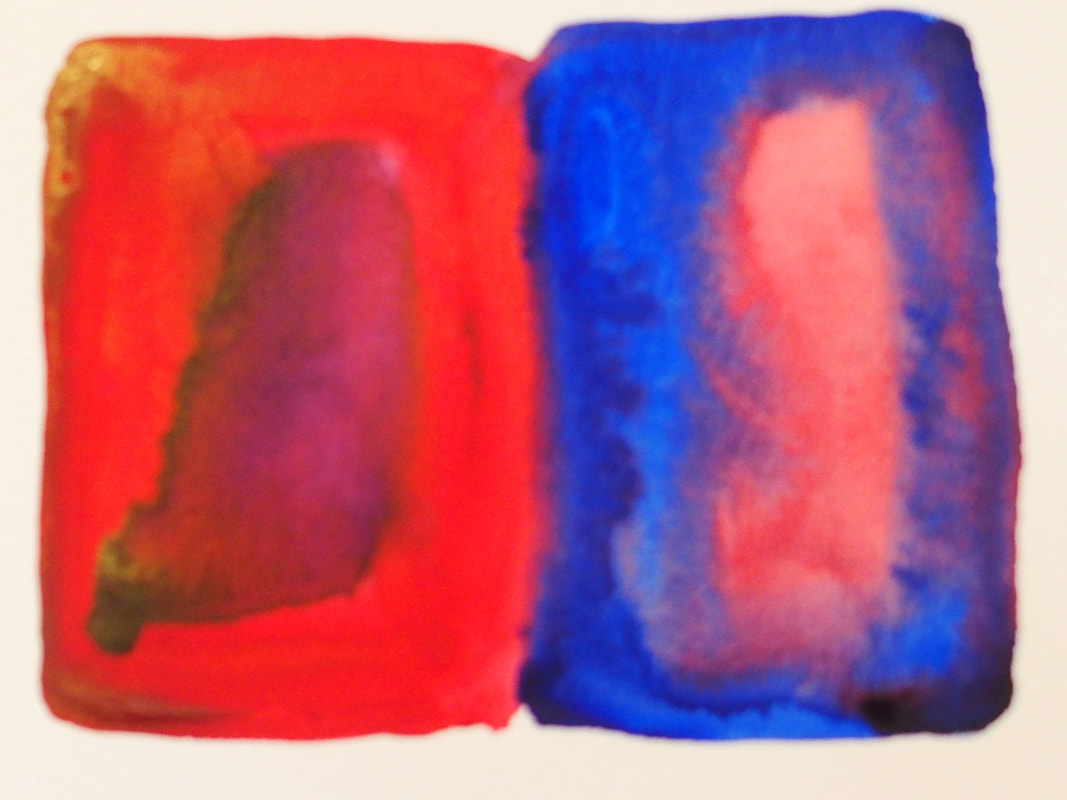
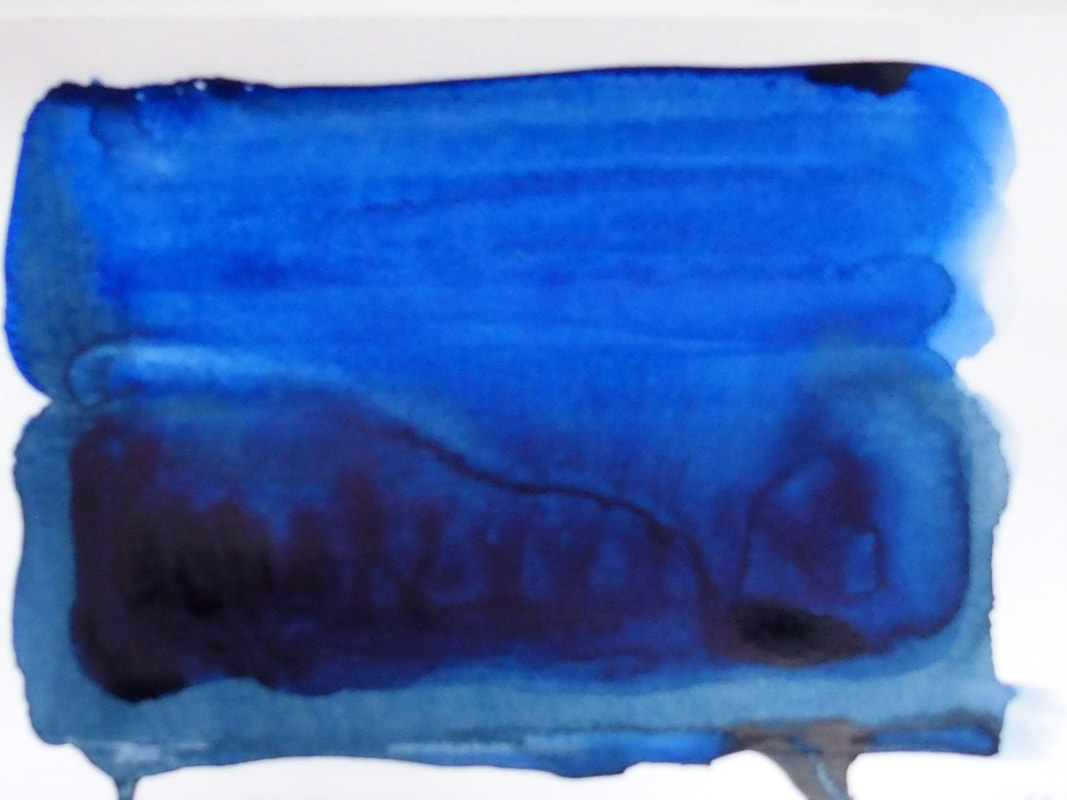
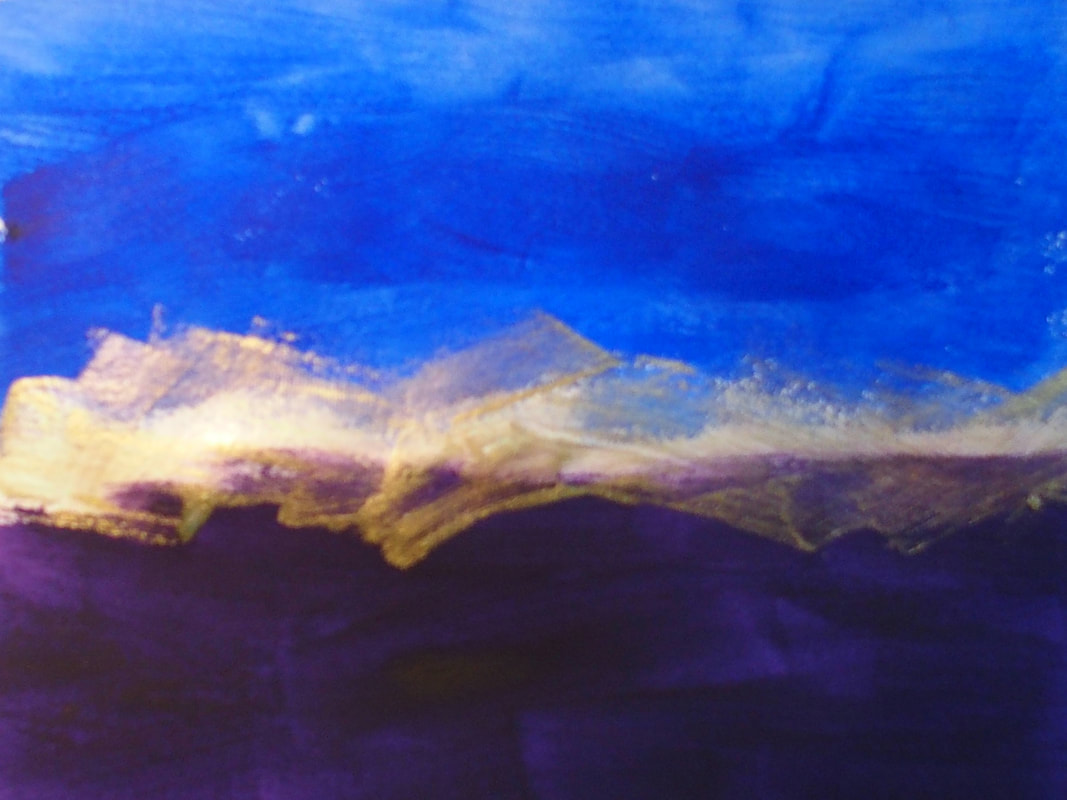
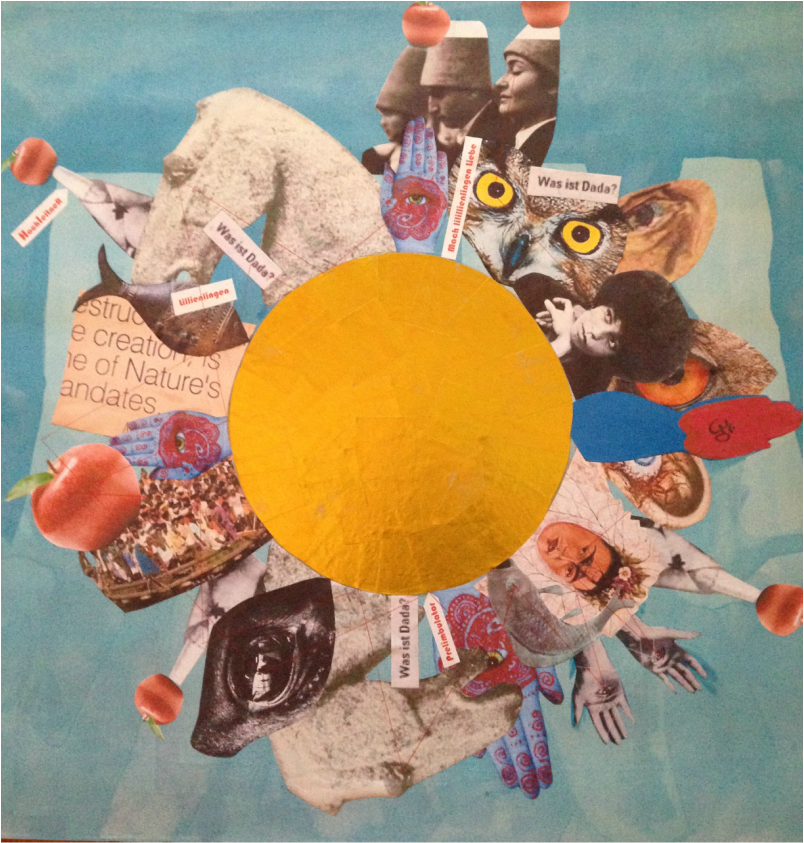
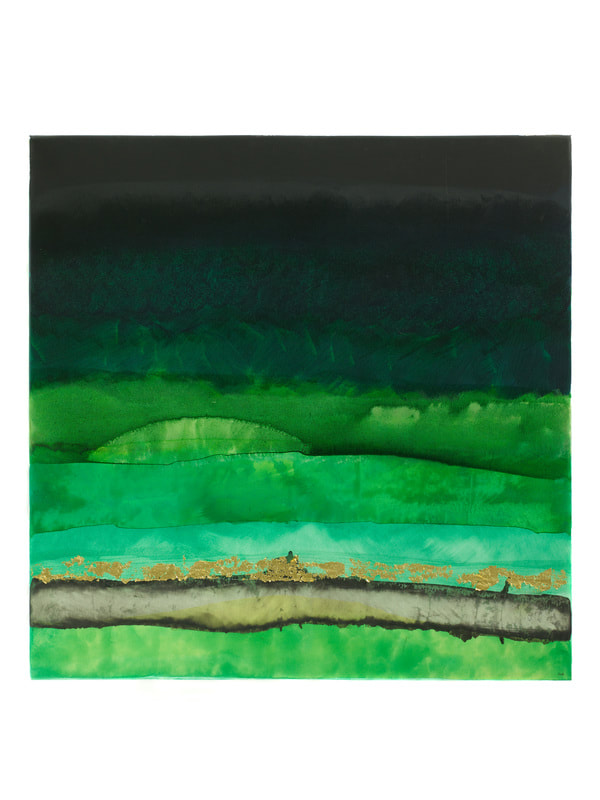
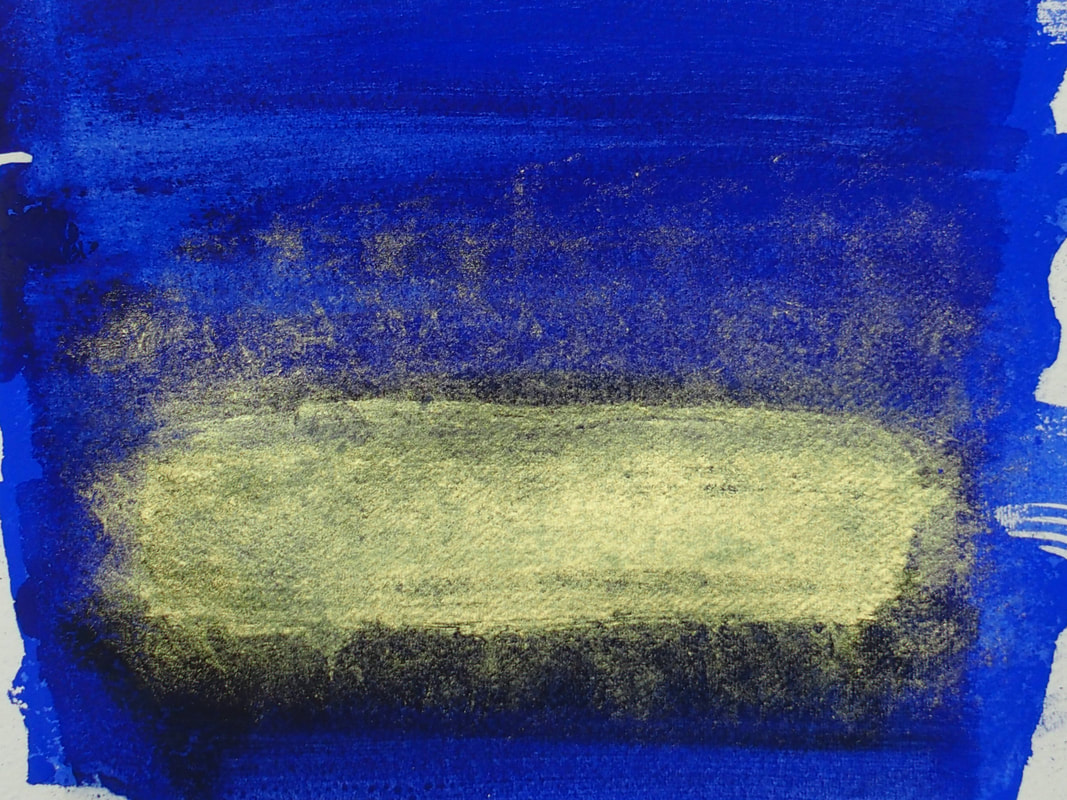
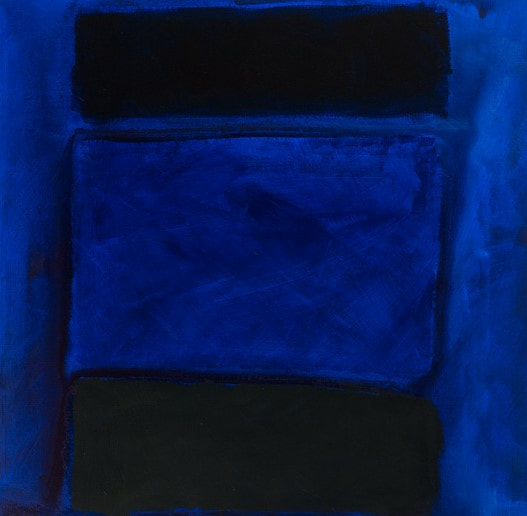
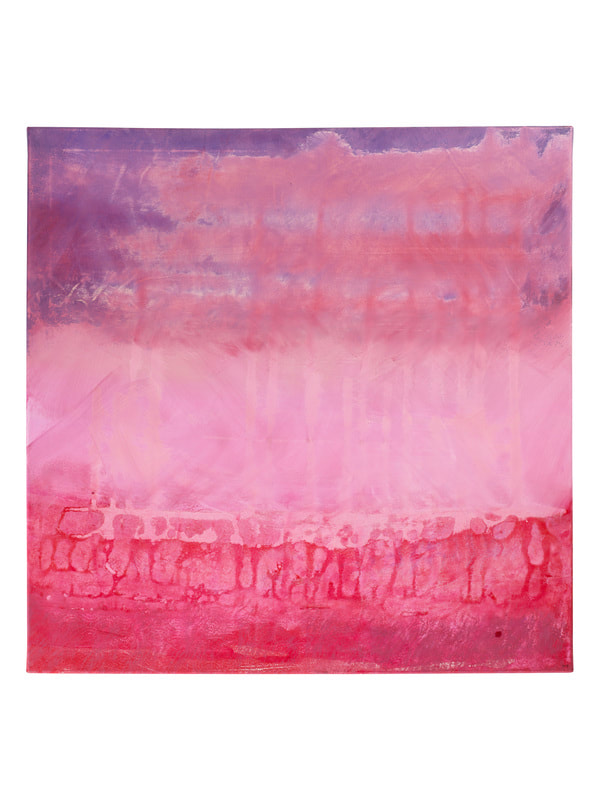
 RSS Feed
RSS Feed